During archaeological excavations carried out in advance of construction on a subway extension in Berlin this year, 11 masterpieces of early Modernism were unearthed. Since November 9, the works of art have been exhibited under the title “The Berlin Sculpture Find: ‘degenerate art’ in bomb rubble” in the Greek Courtyard of the New Museum on Berlin’s Museum Island.
Created between 1918 and 1930, bronze and ceramic works by Marg Moll, Emy Roeder, Edwin Scharff, Naum Slutzky, Karl Knappe, Gustav Heinrich Wolff, Otto Baum and Otto Freundlich fell victim to the Nazi campaign against “degenerate art”. In the course of this campaign, at least 21,000 art works produced by artists associated with Expressionism, Dadaism, Cubism, Fauvism, Surrealism and New Objectivity were removed from museums, sold abroad to earn foreign exchange or simply destroyed.
Classified as “degenerate” and then confiscated, these works of art were stored in a Berlin depot and the museums to which they belonged were subsequently expropriated by law in 1938. Individual works were sold by major Nazis, including Hitler, or were exchanged for “Old Masters”. According to official sources, as many as 1,004 paintings and 3,825 prints were burnt in Berlin in March 1939. Some 125 works were auctioned off in Lucerne in the same year. Unlike the notorious “book burning” carried out by the Nazis, the destruction of these art works was conducted out of the public eye.
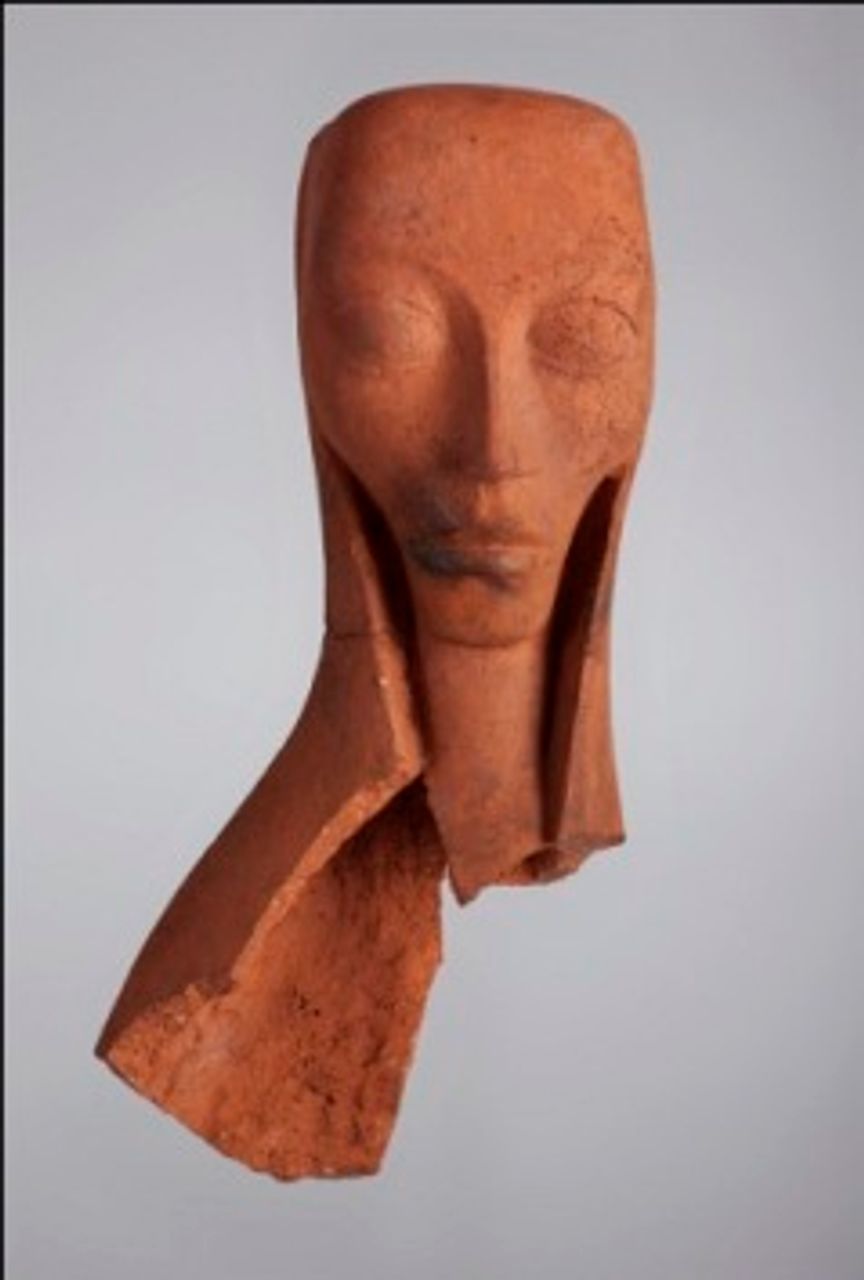 Emy Roeder, Pregnant woman, 1918.
Emy Roeder, Pregnant woman, 1918.© Photo: Achim Kleuker, Berlin
Matthias Wemhoff, director of the Museum of Prehistory and Early History and regional archaeologist of the Berlin state administration, described the recent discovery in the national capital as unique. “Never before have art works with such a background been found during an excavation,” he said.
Some of the findings—such as Marg Moll’s Dancer (c. 1930), Emy Roeder’s Pregnant Woman (1918) and Otto Baum’s Girl Standing (1930)—were part of the infamous Nazi propaganda exhibition, “Degenerate Art”. How the works ended up at the site in the vicinity of Berlin’s Red Town Hall is unknown.
All the sculptures that were found came from museums in Munich, Stuttgart, Karlsruhe and Berlin, from
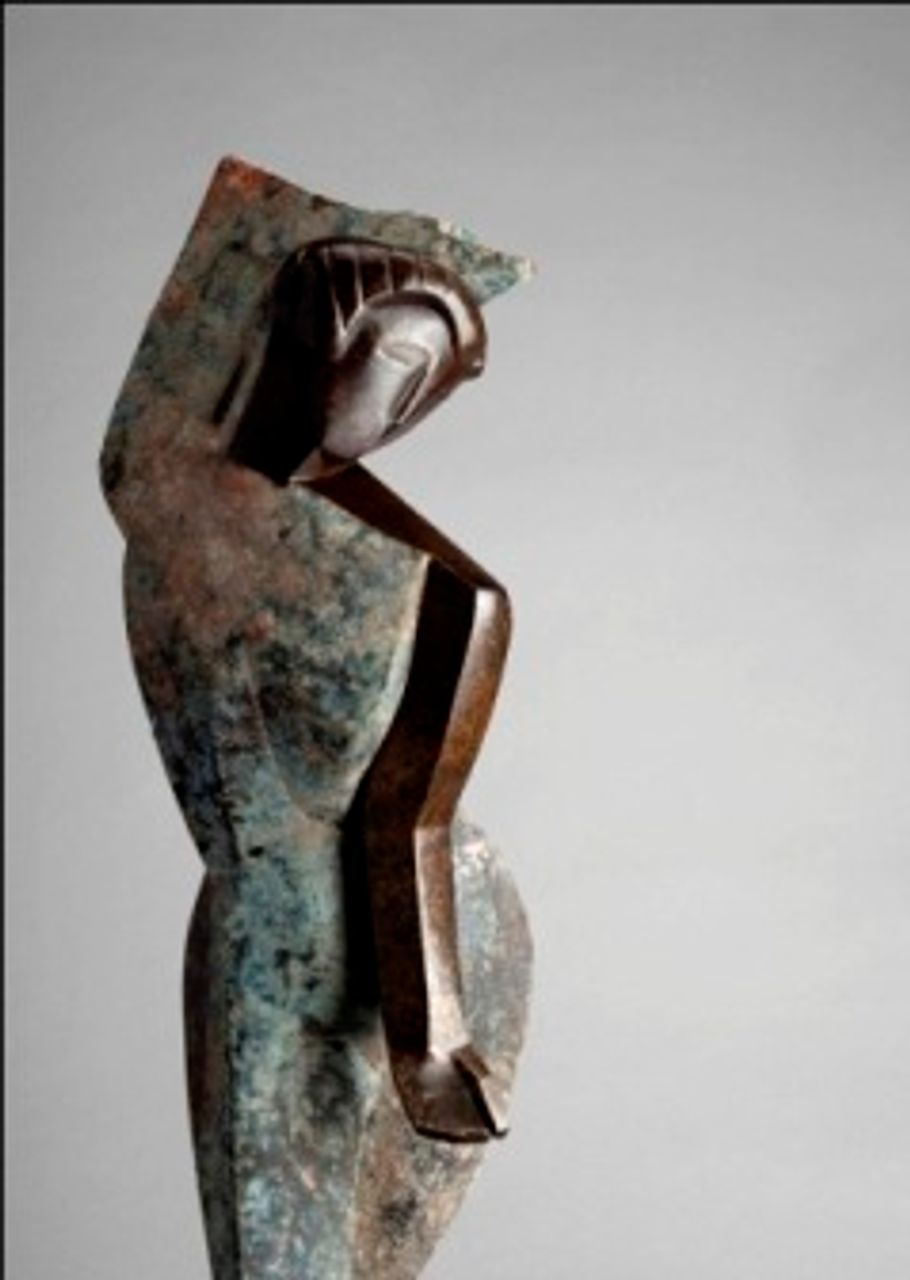 Marg Moll, Dancer, around 1930.
Marg Moll, Dancer, around 1930.© Photo: Achim Kleuker, Berlin
which the Nazis had confiscated them because the pieces did not correspond to the concept of art propagated by the fascist state.
The sculptor Otto Freundlich, whose ceramics were found in Berlin, was one of the artists persecuted by the Nazis for both their artistic work and political beliefs. A head sculpted by Freundlich featured as an allegedly grotesque example on the title page of the official guide to the “Degenerate Art” exhibition.
The sculptor took the view that art was “a unifying language for all people, primarily expressed through painting, sculpture and architectural. Art should remind us that humanity has the task of uniting itself socially.”
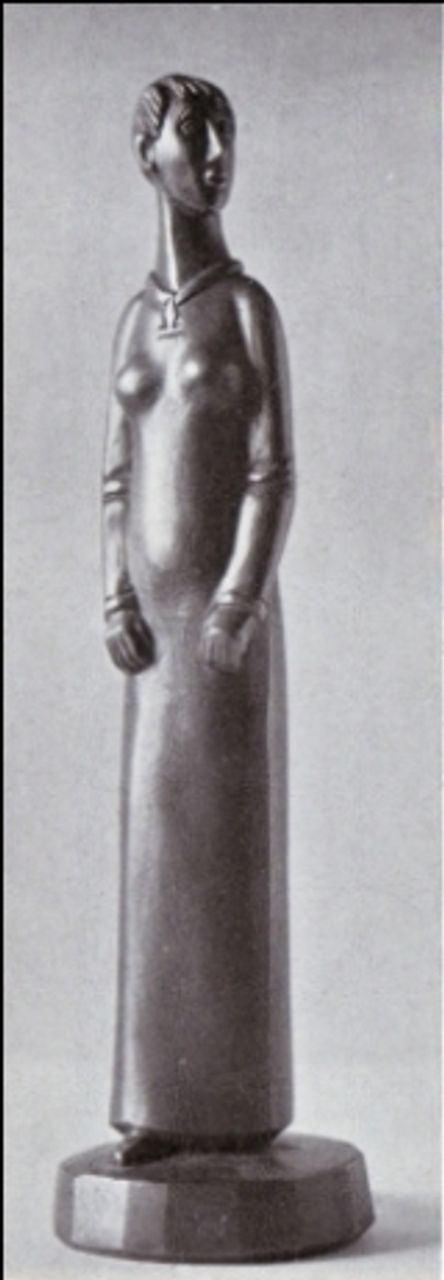 Gustav Heinrich Wolff,
Gustav Heinrich Wolff,Standing garbed figure, 1925.
Reproduction: Gustav
Heinrich Wolff. The plastic
and graphic work, treatment
by Agnes Holthusen.
Hamburg 1964
Together with Max Ernst and Johannes Theodor Baargeld, Freundlich organised the first Dada exhibition in Cologne in 1919. After the November Revolution of 1918, he was one of many—including George Grosz—who aligned themselves with the November Group to support a social revolution through their art. Freundlich had the idea of a “road of sculptures”, unifying peoples of various nations and leading from Paris to Moscow. In 1943, he was murdered by the Nazis in the Lublin/Majdanek concentration camp.
Gustav Heinrich Wolff, whose modelling of a standing bronze figure was found in Berlin, became appointed head of the sculpture department at the Leningrad State Art Academy in 1931, but returned to Germany in disappointment just one year later. The early years of the Soviet Union had witnessed an outburst of outstanding artistic activity which quickly won international recognition. By the 1930s, however, the Stalinist regime was cracking down on intellectual and artistic freedom, bringing to an end the post-revolutionary artistic outpouring.
Among the artists whose works were classified by the Nazis as “degenerate” were Käthe Kollwitz, Ernst Barlach, Emil Nolde, Franz Marc, Otto Dix, Ernst, Max Beckmann, Gerhard Marcks, Paula Modersohn-Becker, Paul Klee, Oskar Kokoschka, Otto Nagel, Grosz and Karl Schmidt-Rottluff. Many others who were less famous are now forgotten because their works were either lost or destroyed. Others were never again to have their works displayed because they were unable to regain their standing in the official art world.
Victimised artists were forbidden to paint; many had to emigrate to save their lives; others died in concentration camps or in gas chambers, or committed suicide. Their works were denounced as “Jewish-Bolshevik”, which provided the opportunity for the artists to be persecuted as political opponents or as “racially inferior” degenerates.
The touring exhibition “Degenerate Art” was initiated by Joseph Goebbels’ propaganda ministry. Adolf Ziegler, president of the Reich Chamber of Fine Arts from late 1936, was instructed to put together an “exhibition of shame”, depicting the “deterioration of art since 1910”.
Ziegler commissioned a consortium of “art inspectors” to trawl through the public museums and galleries. The committee compiled everything from some 100 art collections they considered useful for defaming the Modernist movement. The “Degenerate Art” exhibition opened on July 19, 1937 in Munich and was subsequently staged in numerous German cities until April 1941 to expose the alleged cultural decline of the Weimar Republic.
In his speech at the exhibition’s opening in Munich, Hitler declared: “I swore that if Providence made me your leader, I’d make short work of this degeneration. The German people deserve to be protected from these sick minds. These abusers of beauty and art should be confined to secure asylums for the insane until they re-learn how to think as Germans.”
What made the Nazis respond so aggressively to modern art was its open, international and democratic spirit, as well as its realistic view of society, which was not simply a “national community,” but one that was irrational, socially divided and on the brink of civil war. The outlawed artists were thus accused of having “fought on the side of artistic degradation during the years of the Bolsheviks’ general attack on German art”.
The following passages appeared in the “Degenerate Art” exhibition guide: “Here the means of expression employed by artistic anarchy were adopted to preach the demand for the political anarchy. Every single picture produced by this group is an incitement to the class struggle proposed by Bolshevism .... Workers, working women and the children of workers, their faces grey and green with misery, stare out at the spectator. The drawings only depict fancifully exaggerated ‘capitalists’ and ‘exploiters’, scornfully ignoring the plight of the toiling masses....
“The spectator is supposed to see in the soldier a murderer or a senseless war victim of the capitalist world order in the Bolshevik class struggle ... Thus we see in the drawings of this section—in addition to deliberately revolting caricatures of war cripples and glimpses into mass graves painted in exquisite detail—German soldiers presented as idiots, nastily erotic libertines and drunkards....
“One continually encounters pictures of libertines of the ‘possessing classes’ and their prostitutes, who are placed in contrast to the exhausted, emaciated figures of the proletariat, sluggishly passing by in the background. In other drawings, the harlot is idealistically contrasted with the woman of bourgeois society, who—in the opinion of the creators of this ‘art’—is much more morally depraved than the prostitute. In short: in this section of the exhibition, the moral programme of Bolshevism screams from the walls.”
The Nazis developed their hostility to modern art in the shadow of the unstable Weimar society, whose middle class layers felt battered by crisis and sensed imminent disaster breathing down their necks. This art was so unpatriotic that it was capable of being inspired by the horror of war and by the Russian and German revolutions, and offered a glimpse of how international the world had become. This world was complex. The new art reflected its contradictions and fractures, and fundamentally questioned the conventions of bourgeois society and its understanding of art.
Drawn to radically abstract experimentation, artists wanted to free themselves from the deception of surface appearances to penetrate into what was significant. Thus, the Bauhaus movement’s principle of exposing elements of artistic structure played a prominent role. Naum Slutzky, whose sculpture of a female bust was found in Berlin, worked with the Bauhaus in Weimar. He later became an important industrial designer in Britain. The Bauhaus is just one example of the yearning by many artists of the time to engage in social progress.
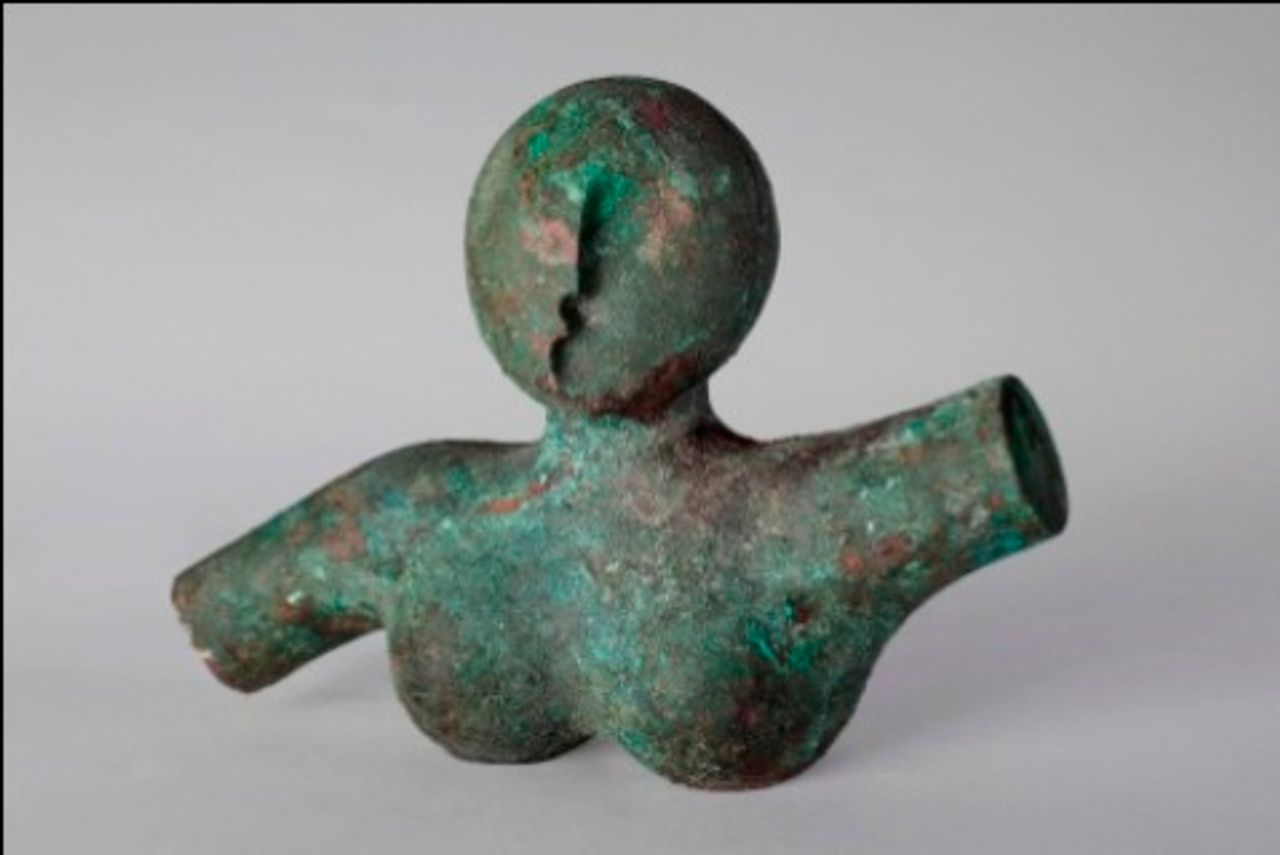 Naum Slutzky, Female bust, 1931. © Photo: Achim Kleuker, Berlin
Naum Slutzky, Female bust, 1931. © Photo: Achim Kleuker, BerlinMany people interested in art visited the “Degenerate Art” exhibition because it was their last chance to see the works before they disappeared from Germany or were destroyed. Jimmy Ernst, son of the surrealist Max Ernst, did so in Hamburg several times.
He recalled: “By about my fifth or sixth visit, I recognised familiar faces. Others had the same experience. A few quick, nervous glances and then, rather impetuously, the customary withdrawal into apathy. Heaven knows what motives each of us assumed for the quirky behaviour of the others. Any of these faces could be one of a member of the Gestapo ... It was a strange encounter with my past, and my feelings fluctuated between pride and fear. Did the authorities really fear my father and his contemporaries so much that they had to stage such a funeral for their works?” (Jimmy Ernst, Not Just a Still Life: Memories of My Father, Max Ernst, Cologne 1991, p. 170-73)
Ernst attended the exhibition 10 times in succession. After the tenth time, a fat man in a Bavarian coat and moss green hunter’s hat said to him, “What do you think of all the crap in here?” Ernst writes: “I froze. He stood next to me, drawing on his cigarette. ‘Well, it must be interesting to you. You’ve been here often enough.’ I felt trapped and terrified, but suddenly I was proud to hear myself saying in a trembling voice: ‘My father was one of the artists in this exhibition.’ And as I blindly hurried away, I heard him calling to me: ‘But you can’t do anything about that ... You should be proud of it.’“
Jimmy Ernst preferred to get away, because he was afraid the man wanted to sound him out.
In order to present the new art propagated by the Third Reich, the “First Great German Art Exhibition” opened in the new House of German Art in Munich in 1937. Here artists were exhibited whose works corresponded to the Nazi ideal. They were chosen by, among others, the sculptor Arnold Breker, whose own works were also represented.
Breker was prized by the Nazis as a creator of monumental sculptures with flawlessly smooth surfaces depicting the German “superman”—self-assured heroes, devoted to fighting and without any trace of weakness or doubt.
The exhibition glorified the pillars of the Nazi ideology’s “new society”: the German mother, the German soldier and the peasantry. The latter was regarded as the epitome of stability and the “rootedness” that was the starting point for the “blood and soil” ideology of the Nazis.
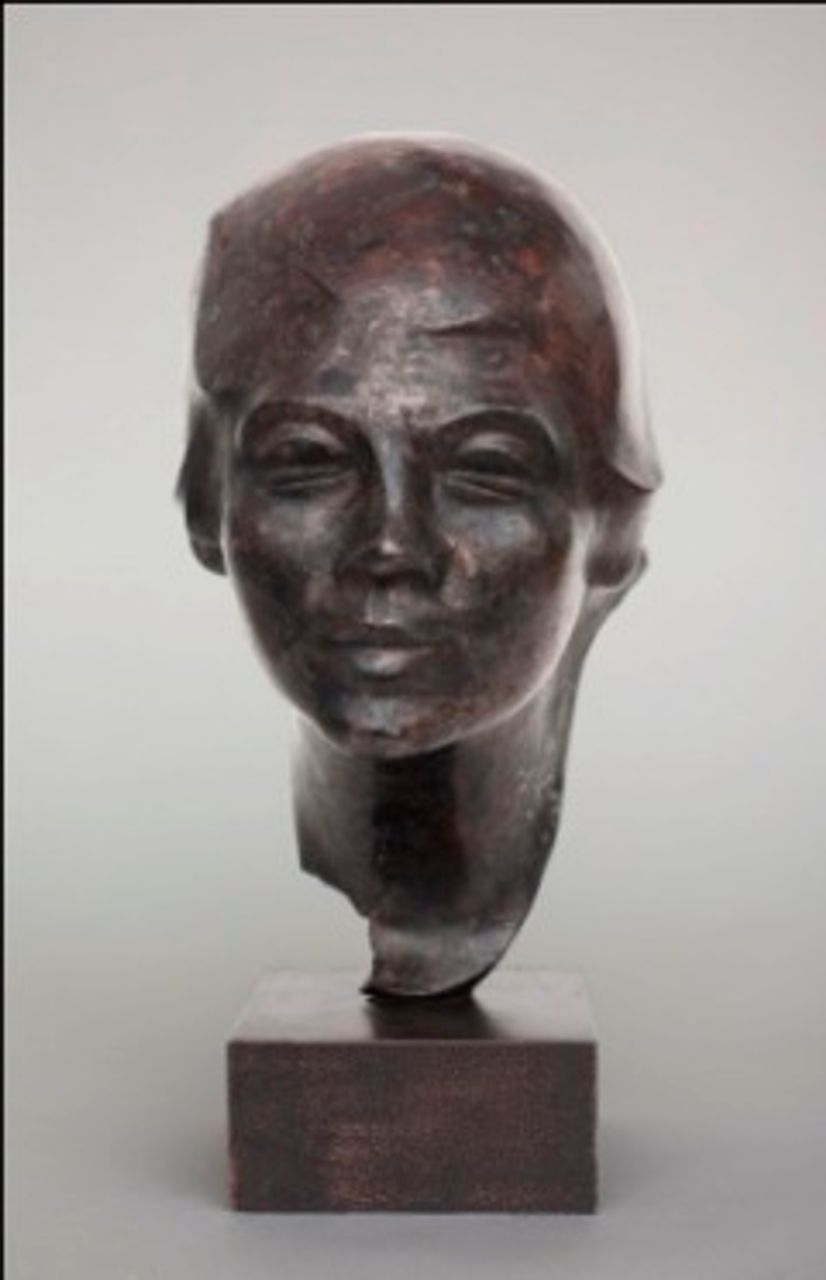 Edwin Scharff, Portrait of the actress Anni
Edwin Scharff, Portrait of the actress AnniMewes, 1917/1921. © Photo: Achim
Kleuker, Berlin
The Nazis’ war against modern art was not limited to the visual arts, such as painting and sculpture; it included all categories, including literature, film and music. The “Degenerate Music” exhibition of 1938 derided, among others, the music of Arnold Schoenberg, Paul Hindemith, Hanns Eisler, Kurt Weill and American jazz.
Immediately after Hitler took power in 1933, countless books of world literature were publicly burned in the campaign, “Against the Un-German Spirit”. In the same year, a special exhibition at the Karlsruhe Art Gallery denounced the “financial mismanagement of the Weimar Republic”, which committed an offence against the German people by purchasing “worthless pictures at extremely inflated prices”. The exhibition, entitled “Government Art 1919-1933”, was organised by the painter Hans Adolf Bühler and presented works of an allegedly “Bolshevik and morbid character,” as Hans Henning Kunze noted in his book, Restitution of “Degenerate Art”.
In the same period, the “Bolshevik Cultural Images” exhibition was opened at the Mannheim City Art Gallery. In the fall of 1933, the first touring exhibition of “Degenerate Art”—the forerunner of the notorious exhibition of 1937—began in Dresden.
The 11 recently found art works offer a glimpse of the cultural wealth and vibrant artistry destroyed by the Nazis. They also point to the gaps and cracks this great loss caused in museum collections and the general creative process of post-war art that continues to this day. Adolf Ziegler, who “cleansed” the museums along Nazi lines, was not required to answer for his crimes against art and artists after the war. He was merely classified as a Nazi fellow traveller.
The law providing for the confiscation without compensation of so-called “degenerate works of art” has never been revoked. The criminal selling off of works of art by the Nazis continues to be protected by a law passed by the Hitler regime, which prevents museums from seeking to reclaim their lost art works.
It remains unknown how the recently recovered works of art found their way into a Berlin cellar, but there is some evidence indicating that a former tenant in the house had hid the art. The head of the research group into such art works at the Berlin Free University, Dr. Maike Hoffmann, informed the WSWS that he was hopeful that further discoveries could be made. So far around 150 works of art assessed by the Nazis as degenerate have been recovered and Hoffmann anticipates that this latest find will not be the last.
The author also recommends:
Hitler’s favourite sculptor: New exhibition displays the work of Arno Breker
[6 September 2006]
Apologetics for National Socialist aesthetics and politics: Taking Positions: Figurative Sculpture and the Third Reich
[11 January 2002]
